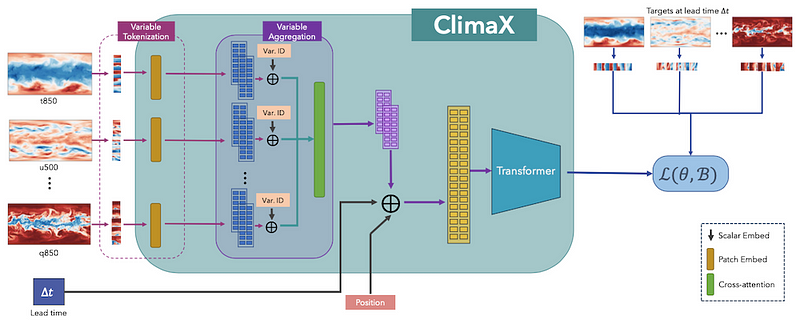
Introduction
Accurate weather forecasting is essential for a wide range of industries, from agriculture to transportation and energy management. While short-term forecasts have become increasingly precise, predicting weather patterns on a subseasonal timescale (two to six weeks ahead) remains a challenge. Microsoft’s AI for Earth program has been working on improving subseasonal weather forecasting using artificial intelligence (AI) and machine learning techniques. In this comprehensive article, we will delve into Microsoft’s AI-driven approach to subseasonal climate prediction and explore the potential impact on various industries and global communities.
1. The Challenge of Subseasonal Weather Forecasting
Subseasonal weather forecasting involves predicting climate patterns and extreme weather events two to six weeks in advance. Accurate subseasonal forecasts can provide valuable insights for decision-makers in various sectors, including agriculture, energy, and water management. However, traditional numerical weather prediction models struggle to produce accurate forecasts on this timescale, as they often lose predictive skill beyond one to two weeks due to the chaotic nature of the atmosphere.
2. Microsoft’s AI for Earth Program
Microsoft’s AI for Earth program is a $50 million, five-year initiative aimed at developing AI and machine learning solutions to address global environmental challenges, including climate change, biodiversity, water, and agriculture. The program supports projects and researchers worldwide, providing access to Microsoft’s cloud and AI resources and fostering collaboration among scientists, engineers, and technologists.
3. AI-Driven Subseasonal Weather Forecasting
As part of the AI for Earth program, Microsoft researchers have been developing AI-driven models for subseasonal weather forecasting. These models leverage machine learning techniques to learn patterns and relationships within large volumes of historical climate data, allowing them to make more accurate predictions on subseasonal timescales.
The AI-driven models developed by Microsoft researchers incorporate various sources of data, such as atmospheric and oceanic conditions, to make their predictions. These models also consider factors that are not typically included in traditional weather forecasting, such as the El Niño-Southern Oscillation (ENSO) and the Madden-Julian Oscillation (MJO), which can influence weather patterns on subseasonal timescales.
4. The Global Subseasonal Weather Forecast Rodeo
In collaboration with the National Oceanic and Atmospheric Administration (NOAA) and other partners, Microsoft organized the Global Subseasonal Weather Forecast Rodeo in 2021. This competition invited researchers and data scientists from around the world to develop and submit their own AI-driven models for subseasonal weather forecasting.
The Rodeo’s goal was to identify and encourage the development of innovative AI and machine learning techniques for improving subseasonal forecasts. Participants were tasked with predicting temperature and precipitation patterns for the United States, Europe, and East Asia, with a focus on two-to-four-week and four-to-six-week forecasts.
5. Impact of AI-Driven Subseasonal Weather Forecasting
Improved subseasonal weather forecasts have the potential to transform various industries and global communities in several ways, including:
a. Agriculture: Accurate subseasonal forecasts can help farmers make informed decisions about planting, irrigation, and pest management, ultimately increasing crop yields and reducing food waste.
b. Energy management: More precise forecasts can enable energy companies to optimize power generation and distribution, reducing costs and improving the reliability of energy supplies.
c. Water resource management: Improved subseasonal forecasts can help water managers better allocate resources, anticipate droughts or floods, and prepare for potential water shortages.
d. Disaster preparedness: Enhanced predictions of extreme weather events, such as heatwaves, cold snaps, or storms, can help governments and communities prepare for potential disasters and mitigate their impacts.
6. Future Directions
As AI-driven subseasonal weather forecasting continues to advance, researchers and industry leaders are exploring new avenues to further enhance prediction accuracy and extend the benefits of improved forecasts to more communities worldwide. Some future directions include:
a. Incorporating additional data sources: By integrating new types of data, such as satellite observations and social media posts, AI-driven models can potentially improve their predictive capabilities and provide more accurate forecasts.
b. Expanding geographic coverage: As AI-driven subseasonal forecasts become more precise, efforts to extend their coverage to other regions, such as Africa and South America, can help address climate-related challenges in these areas and support local decision-making processes.
c. Real-time data assimilation: Integrating real-time observations into AI-driven forecasting models can help improve their accuracy and responsiveness, allowing them to adapt to rapidly changing conditions and provide more reliable predictions.
d. Interdisciplinary collaboration: Encouraging collaboration between climate scientists, data scientists, and experts from other fields can help drive innovation and develop new techniques for improving subseasonal weather forecasting.
Summary
Microsoft’s AI-driven approach to subseasonal weather forecasting holds significant promise for transforming various industries and helping global communities better prepare for and adapt to changing climate patterns. Through initiatives like the AI for Earth program and the Global Subseasonal Weather Forecast Rodeo, Microsoft and its partners are fostering innovation in the field of weather prediction and demonstrating the potential of AI and machine learning to address complex environmental challenges.
As research and development in AI-driven subseasonal forecasting continue, the potential benefits for agriculture, energy management, water resource management, and disaster preparedness will become increasingly apparent. By supporting ongoing advancements in this field, organizations like Microsoft are helping to create a more resilient and sustainable future for communities around the world.
Find more … …
Microsoft Excel Tutorial For Beginners – Count cells not between two numbers
Microsoft Excel Tutorial For Beginners – Count cells less than
What is Artificial Intelligence (AI) and why is it important?